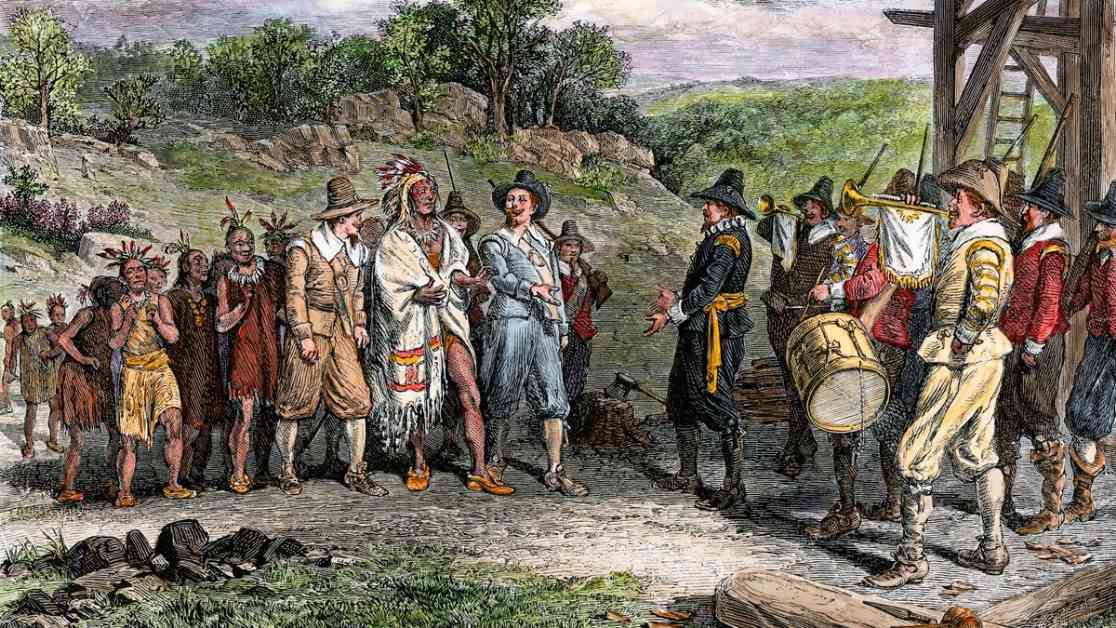Every November, Americans come together to celebrate Thanksgiving, a holiday that commemorates the partnership between English colonists and the Wampanoag people in the 17th century. While the story taught in schools may be a simplified version, the truth behind the first Thanksgiving in 1621 is much more complex.
The Pilgrims, about 100 religious individuals, set sail from England on the Mayflower in 1620 and landed in what is now southeastern Massachusetts, where the Wampanoag people lived. Originally intending to settle in the northern part of the Virginia Colony, bad weather forced them to seek shelter in Cape Cod, where they eventually founded Plymouth Colony and formed an alliance with the Wampanoag.
Contrary to popular belief, the Wampanoag were not simply friendly natives who welcomed the English with open arms. They were willing to form a military alliance with the colonists because their population had been decimated by disease, making them vulnerable to rival tribes. The arrival of Europeans in the region had introduced new pathogens that the Wampanoag had no immunity to.
Despite previous violent encounters between Europeans and Indigenous peoples, the Wampanoag saw the benefits of an alliance with the English, including access to metal weaponry and guns. This military partnership was crucial for their survival against rival tribes like the Narragansett.
When the English decided to celebrate their first harvest in the fall of 1621, the Wampanoag were initially not invited to the feast. However, when they heard gunfire, they rushed to the colony, thinking the English needed help. Instead, they found the colonists feasting and joined in the celebration. The meal likely consisted of corn, fish, deer, and wild turkey, along with other local foods like berries and greens.
The Thanksgiving feast in 1621 was a significant event, but it was not the elaborate family celebration we know today. There were no tables or chairs, and people likely ate sitting on the floor with their hands. The foods they enjoyed were different from modern Thanksgiving dishes, as ingredients like butter, flour, sugar, and potatoes were not yet available in the region.
Historians have pieced together the details of the first Thanksgiving from a few written accounts by colonial figures like William Bradford and Edward Winslow, as well as archaeological and oral history evidence from the era. While the 1621 feast was not considered a unique event at the time, it laid the foundation for the Thanksgiving holiday that President Abraham Lincoln officially established in 1863.
In conclusion, the true story of the first Thanksgiving reveals a complex relationship between English colonists and Indigenous peoples, highlighting the challenges and alliances that shaped early American history. As we gather to celebrate Thanksgiving each year, it’s important to remember the origins of this holiday and the diverse cultural influences that have contributed to its evolution over time.










